As global chief executive officer of MAN Truck & Bus, Alexander Vlaskamp has no doubts about where the commercial vehicle industry is heading.
“The future has to be sustainable, and we are part of the plan,” he told transport journalists at a conference held at the company’s UK headquarters in Swindon.
That plan revolves around the steady roll-out of zero-emission electric trucks.
The company he heads is embarking on what will be a challenging journey to a zero-emission road transport nirvana from a firm base.
Last year it sold 116,000 vehicles (a 37% increase on 2022’s total), enjoyed sales revenues of 14.8bn euros (a 31% rise) and made a 1.08bn euro profit.
That was the best performance in the company’s history and equated to a 7.3% return on sales. That compared with just 1.2% in 2022.
“We’ve spent the last four years post-pandemic restoring the business, so we have sufficient profitability to allow us to invest,” he says; and while unit sales fell by 12%, to 24,000, during the first quarter of the current fiscal year thanks to model year changes, sales revenue and profits were up compared with the first quarter of 2023.
At least some of the electric trucks MAN is building will be driverless.
“We’ve now got a licence to test autonomous trucks in Germany and testing has just started,” Vlaskamp says.
It has become the first manufacturer to put an autonomous truck onto the country’s motorway network.
MAN’s newly-introduced electric truck line-up is being well-received,“We’ve taken 1,400 orders for the eTGX/eTGS so far and the first 150 will find their way to customers this year,” he adds.
Series production will start in the first quarter of 2025 at the company’s plant in Munich, Germany, said Friedrich Baumann, a member of MAN Truck & Bus’s main executive board and head of sales and customer solutions.
Rigid 4x2s and 6x2s and 4x2 tractor units will arrive in the UK next year, with the first ones likely to be in service with customers mid-year.
A 6x2 tractor unit will not be available, alas. There is insufficient space on the chassis to package the batteries that will be required.
“We’ve got tractor units and chassis cabs ready in a portfolio which is expanding into tippers, skip-loaders and concrete mixers and with a choice of from three to six batteries depending on user requirements,” he says.
“Many transport fleets are coming under pressure from their customers to make the switch to battery-electric.”
The batteries are mounted on the chassis and beneath the cab, giving eTGX and eTGS up to 480kWh of usable battery capacity.
That should deliver a daily range of up to 500 miles says the manufacturer if an interim rapid charge-up is factored into the equation.
In addition to the CCS standard with up to 375kW, MAN is offering the even more powerful megawatt charging standard (MCS) for fast intermediate charging during breaks from driving.
This will initially enable up to 750kW, with over 1MW of charging power on the horizon.
It will be available from 2025 onwards he stated, and will be capable of getting a truck’s battery pack from 10% to 80% of its charging capacity in no more than half-an-hour.
Nor is MAN depending on third-party suppliers for the traction batteries it requires, instead building its own battery plant in Nuremburg, Germany.
However, the needs of operators who want to remain with diesel, at least for the present, are not being neglected, says Vlaskamp. “We’re building electric and diesel trucks on the same production line,” he adds.
Vlaskamp is pleased to see that there is now more clarity over what the Euro 7 emission restrictions will entail so far as trucks are concerned. “It looks as though we’ll be able to comply with them using emission control systems similar to the ones we’re using today.”
Euro 7 will apply to new trucks from mid-2029 onwards.
The success of electric trucks does not depend on the companies that make them and the fleets that adopt them. It is reliant on the supporting infrastructure, and progress is being made here, he adds.
Traton, Daimler Truck and Volvo have joined forces in a 0.5bn euro programme to install publicly-accessible truck charging stations along key routes across Europe. “The first two are now in place, in the Netherlands and in France,” says Vlaskamp.
MAN also has plans in place to allow operators to charge their trucks at its dealerships.
Such charging points will rely on having a viable electricity grid connection. That is perhaps the sector’s biggest challenge given that its development is often in the hands of politicians.
Having one in place will give hauliers the confidence to invest in electric trucks, despite the fact that they remain considerably more expensive so far as front-end price is concerned than their diesel counterparts.
The energy they consumes costs less however says Vlaskamp, and the cost difference could and should be made even greater, he contends.
He believes the use of diesel should attract a meaningful carbon tax. “If goods are transported using carbon fuels then a price has to be paid,” he adds. “I think that is very important.”
Although MAN does not sell electric city buses in the UK, it is the number one supplier of these vehicles in mainland Europe.
Its experience in this sector of the market has aided its development of electric trucks, adds Baumann.
“A thousand of our electric city buses are now in service,” he says. “We supplied 700 in 2023 and we’ll deliver 1,000 this year.”
Around 60% to 70% of the work operators are asked to tender for involves electric models.
Vlaskamp is also an executive board member of Traton Group. In addition to MAN it encompasses Scania, Navistar of the USA and VW Truck & Bus, which has a strong presence in South America.
The brands are co-operating to establish commonality of many components in order to cut costs, including braking systems and rear axles. Navistar is employing Scania’s latest 13-litre engine while VW Truck & Bus is employing MAN platforms.
The group is working to achieve savings in other ways, including using its size to deliver more competitive funding packages to operators.
“Traton Financial Services will soon be embedded in MAN’s UK business,” says Vlaskamp.
At least one battery repair centre will be embedded too. Said Baumann: “We’ll be rolling out one or two pilot locations in each of the countries we operate in.”
Britain will see its first centre open in 2025.
The importance of Britain so far as MAN is concerned should not be underestimated says UK managing director, Stefan Thyssen.
“It’s the company’s third biggest market in the entire world and 2023 was our most successful year ever in the UK in revenue and profit terms,” he says. “We’re expanding our customer base.”
He wants to build on that success, and that means growing the dealer network. That will involve expanding and refurbishing some of the existing sites and recruiting more outlets.
“We’ve got 66 locations and that’s not enough,” he says. “We need 10 to 15 more.”
Recruitment will be taking place at a time of considerable change for every site. “By the end of 2025 every single location will be ready to deal with electric vehicles,” he adds.
The manufacturer is offering MAN ServiceCare says Thyssen. It is a digitised maintenance and repair package which among other things involves the truck communicating directly with the dealer workshop if a fault arises so arrangements can be put in place to get it rectified.
Also in place is what MAN describes as its 360-degree eMobility Consulting package. It provides advice on the most suitable vehicles for a fleet’s needs taking into account the routes it uses, the cargo it carries and the charging infrastructure that will be required.
Available too are MAN eReadyCheck, which customers can use to check how best their routes can be served electrically, and MAN eManager. Fleets can use the latter to keep tabs on the charging status of their vehicles.
Thyssen would like to see greater support from the UK government for a charging infrastructure for heavy trucks. “More investment would be greatly appreciated, and we would like to see government introduce binding infrastructure installation targets,” he says.
“Remember that road transport employs 1.5m people in Britain, and 81% of goods are moved by road.”
The number of publicly-accessible charging points for trucks wouldn’t need to be huge, he stressed. “What we do need though is the power of megawatt chargers,” he added.
The government has introduced a 2.0-tonne gross weight concession for some alternative fuel trucks. However it has not increased permitted axle weights, which restricts the benefits the concession can deliver; an approach which MAN would like to see changed.
Westminster has also rolled out the Zero Emission HGV and Infrastructure Demonstrator programme. Backed by the taxpayer to the tune of £200m, it is a five-year trial of battery-electric and hydrogen fuel cell trucks grossing at from 40 to 44 tonnes.
Even more support is needed if manufacturers selling trucks in the UK are to achieve mandated CO2 cuts of 15% from 2025 and 30% from 2030 compared with 2019 levels.
Failure to hit these targets will result in heavy fines similar to those they face in mainland Europe for non-compliance.
The obligation applies to 4x2 and 6x2 tractor units and rigids grossing at above 16 tonnes.
MAN is not neglecting the potential of hydrogen and hydrogen fuel cells and plans to produce an initial 200 or so trucks under the hTGX banner that will run on hydrogen as a combustion fuel.
Due to be delivered to customers in Germany, the Netherlands, Norway, Iceland and selected non-European countries next year, it is aimed at customers who need to shift heavy loads in markets without a comprehensive battery charging infrastructure and where sufficient hydrogen is available.
Says Baumann: “For specialist applications hydrogen combustion or, in the future, fuel cell technology are suitable options.”
The H45 hydrogen combustion engine is based on MAN’s D38 diesel. It can deliver up to 383kW/520hp and up to 2,500Nm of torque with a potential range of up to 375 miles before refuelling is necessary.
With hydrogen compressed to 700bar and a tank capacity of 56kg, the vehicle can be refuelled in less than 15 minutes, says MAN.
Although the emissions it produces are minimal, combusted hydrogen is not entirely emission-free, and green hydrogen produced using sustainable resources should be used to make the environmental argument stack up. Unfortunately green hydrogen is not as yet widely available.
Returning to the topic of autonomous trucks, Vlaskamp believes that they could potentially go into service with hauliers on the public highway by the end of the decade, but only if the technology used is utterly reliable and safe; and that means safer than even the best driver.
If that can be achieved then the benefits will be enormous, he points out, because a driverless truck can keep working 24/7.
He envisages them being used to haul goods from one distribution hub to another, with both hubs likely to be adjacent to a motorway.
Their introduction will of course be subject to legislation, and to clarity from insurers over who is responsible if there is an accident; the truck’s manufacturer, or its owner.
Says Baumann: “I think the use of autonomous trucks will come sooner in the USA than it will in Europe.”
The vast distances trucks have to cover on the other side of the Atlantic, often on highways with comparatively little traffic, make a switch to driverless particularly appealing.
He highlights the impact the slow but steady swing towards zero-emission technology is having on truck manufacturers and the operators they serve.
“I think more has happened in our industry over the past three years than has happened in the past 27,” he remarked.
“It’s amazing to think that by 2030, 50% of what we as a manufacturer will build and put on the road will involve zero-emission technology.
Adds Thyssen: “Decarbonisation is a destination for all of us. We have to take responsibility for the society we live in.”
By John Lewis

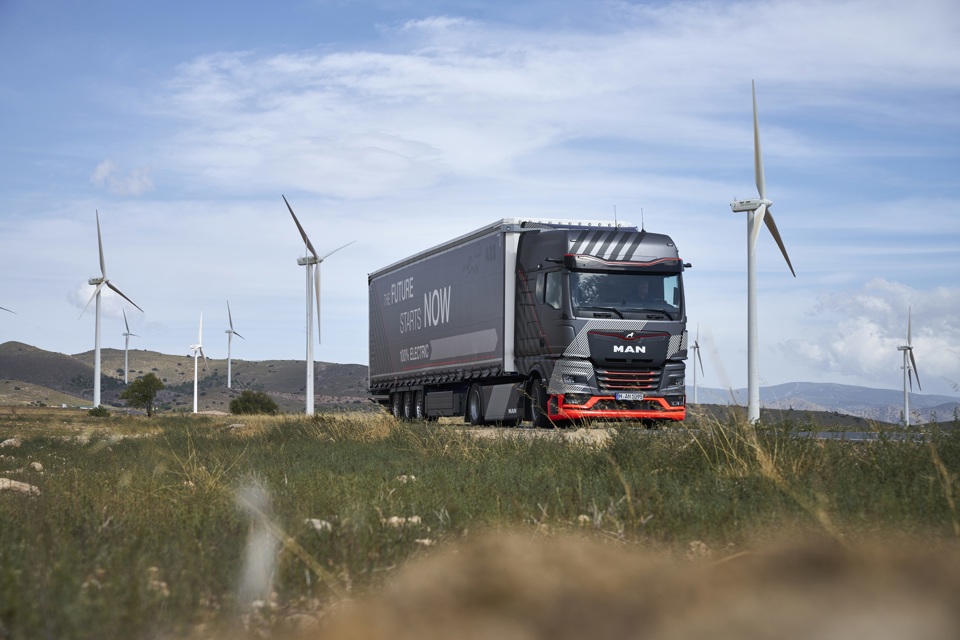

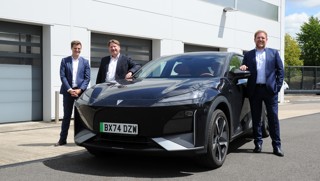
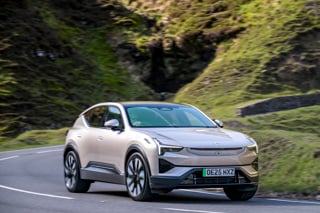
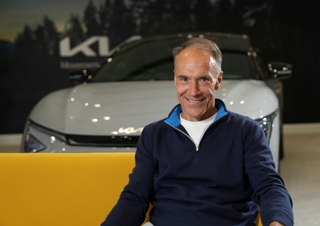
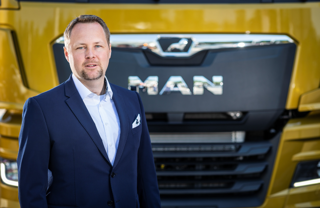







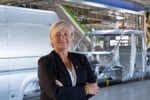


Login to comment
Comments
No comments have been made yet.